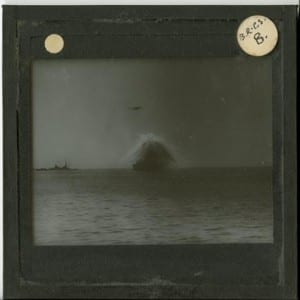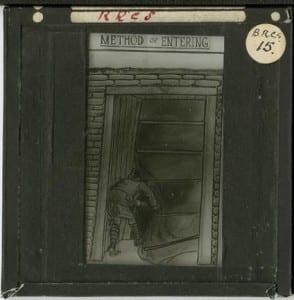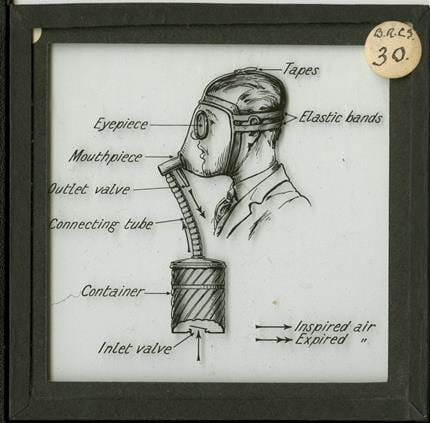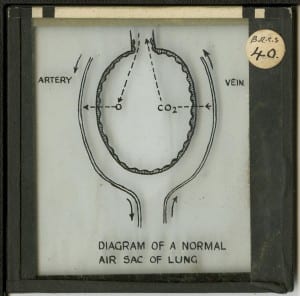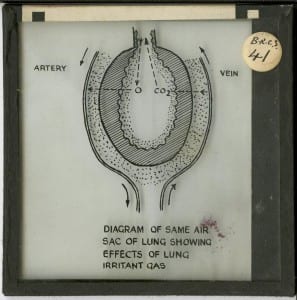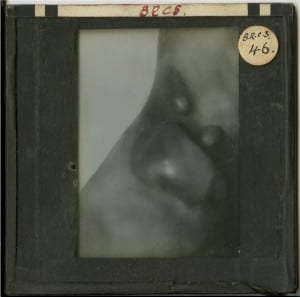Mystery Military Slide Collection
by Jane Pettitt and Alicka Machurich, UCL Anthropology
Hello, our names are Jane and Alicka. For the past few months, we have worked in the Ethnography Collection of UCL on lantern slides from the interwar period, produced circa 1924. We documented a box of 49 slides which we have been able to connect to the British Red Cross Society (B.R.C.S.). Each of these lantern slides contain images which were most likely used to educate the masses on what war looked like, alongside how to deal with the threat of gas attacks.
Images such as the following are what many today would associate with warfare. The classic Lewis Gunner stances alongside use of explosives were certainly key attributes of war, but were not the only aspect of WWI warfare.
During this period chemicals were used (such as mustard gas) which had a devastating impact on the soldiers. This lead to a widespread effort to ensure the safety of those exposed to the substance. Evidence of this is documented through the protective procedures put in place by the B.R.C.S. The detail in the slide layouts, both in the photographs and drawings, indicate a more informative nature for use possibly as an educational aid towards protecting yourself and community in times of attack. Although at this stage we can only speculate, it is possible that there are many more lantern slide collections were distributed for a similar purpose, to educate and instruct the home front pre-WWII.
A huge part of the collection consists of different images of gas masks. You find drawings of them, explaining features of the different types, as well as photos which show them in wear.
These slides not only show the methods put in place by the army to combat this threat, they also show the physical human repercussions of contact with mustard gas.
We are still not entirely sure how these lantern slides came into the possession of UCL. It is highly likely that those were used as a teaching collection, highlighting the perils of war, as well as self-protection.
For further information, you can visit the British Red Cross’ website
